It’s funny how often people overlook the simple task of storing their hiking boots properly, only to find them falling apart after a few seasons.
If you want to keep your trusty companions in top shape for those exhilarating trails, you’ll need to pay attention to a few key steps.
From cleaning to choosing the right storage environment, there’s more to it than you might think. So, what are the best practices to guarantee your boots last longer?
Contents
- 1 Clean Your Boots Before Storing
- 2 Remove and Dry Insoles
- 3 Apply Waterproofing Treatments
- 4 Choose the Right Storage Environment
- 5 Utilize Boot Care Products
- 6 Organize and Handle Boots Properly
- 7 Consider Material Impact on Longevity
- 8 Maintain Boot Shape During Storage
- 9 Monitor Storage Conditions
- 10 Regularly Inspect Stored Boots
Clean Your Boots Before Storing
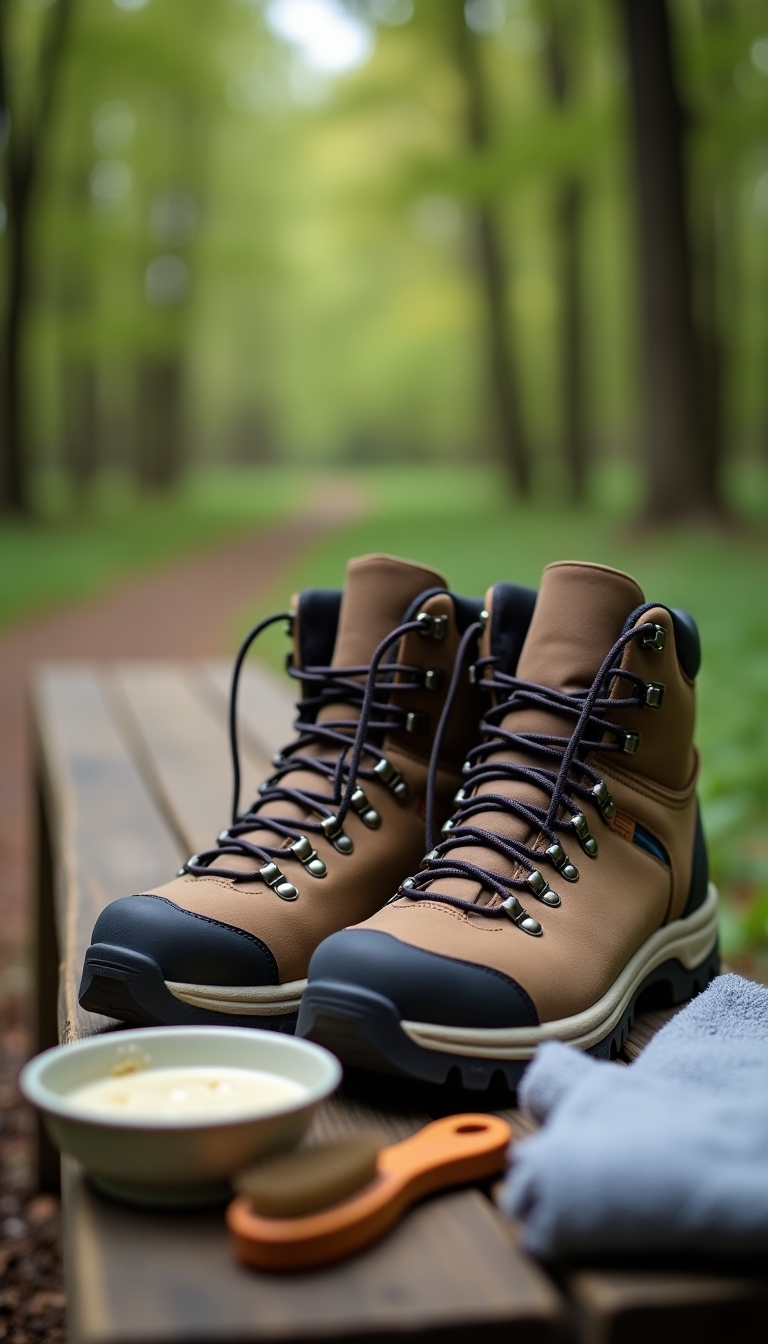
Before you tuck your hiking boots away for the season, it’s crucial to give them a thorough cleaning to confirm they’re ready for your next adventure.
Start by removing loose dirt; simply tap your boots together to dislodge debris. Next, use a soft-bristled brush to gently scrub the uppers with a specialized boot cleaner or mild dish soap, avoiding harsh detergents. For waterproof boots, verify the cleaner’s compatible.
Pay attention to the outsoles—brush them vigorously to eliminate stubborn mud and small rocks. Once you’ve rinsed off all soap residue, wipe them down with a damp cloth. Regular care of your boots will extend their lifespan, ensuring they remain in good condition for your future hikes.
SEE THIS: From Mountains to Markets: Backpacking Outfits That Transition Effortlessly!
Remove and Dry Insoles

Start by removing the insoles from your hiking boots; this simple step is essential for keeping them in top shape. Removable insoles are designed for easy drying and cleaning, so don’t skip this. If your insoles are glued in, you might need a blow dryer or a flathead screwdriver to gently loosen them.
Once out, allow your insoles to air dry completely in a well-ventilated area. Moisture buildup can lead to unpleasant odors and even mold, so proper drying helps prevent this issue. Avoid direct sunlight or heaters, as they can damage the materials.
SEE THIS: Pinterest-Perfect Hiking Outfits for Every Summer Adventure!
Apply Waterproofing Treatments

While hiking boots are built to withstand rugged terrains and unpredictable weather, applying the right waterproofing treatments is essential for maintaining their integrity and performance. Start by choosing a treatment that matches your boots’ material—leather, nubuck, or suede.
For leather, wax provides long-lasting protection, but keep in mind it can interfere with resoling. Waterproof hiking boots lose effectiveness over time, so it’s crucial to regularly check their condition.
Apply treatments to damp boots for better absorption, ensuring even coverage, especially on seams. Follow the product’s instructions for the best results, and consider a second coat for improved waterproofing.
SEE THIS: Aesthetic Hiking Gear to Match Your New Boots!
Choose the Right Storage Environment
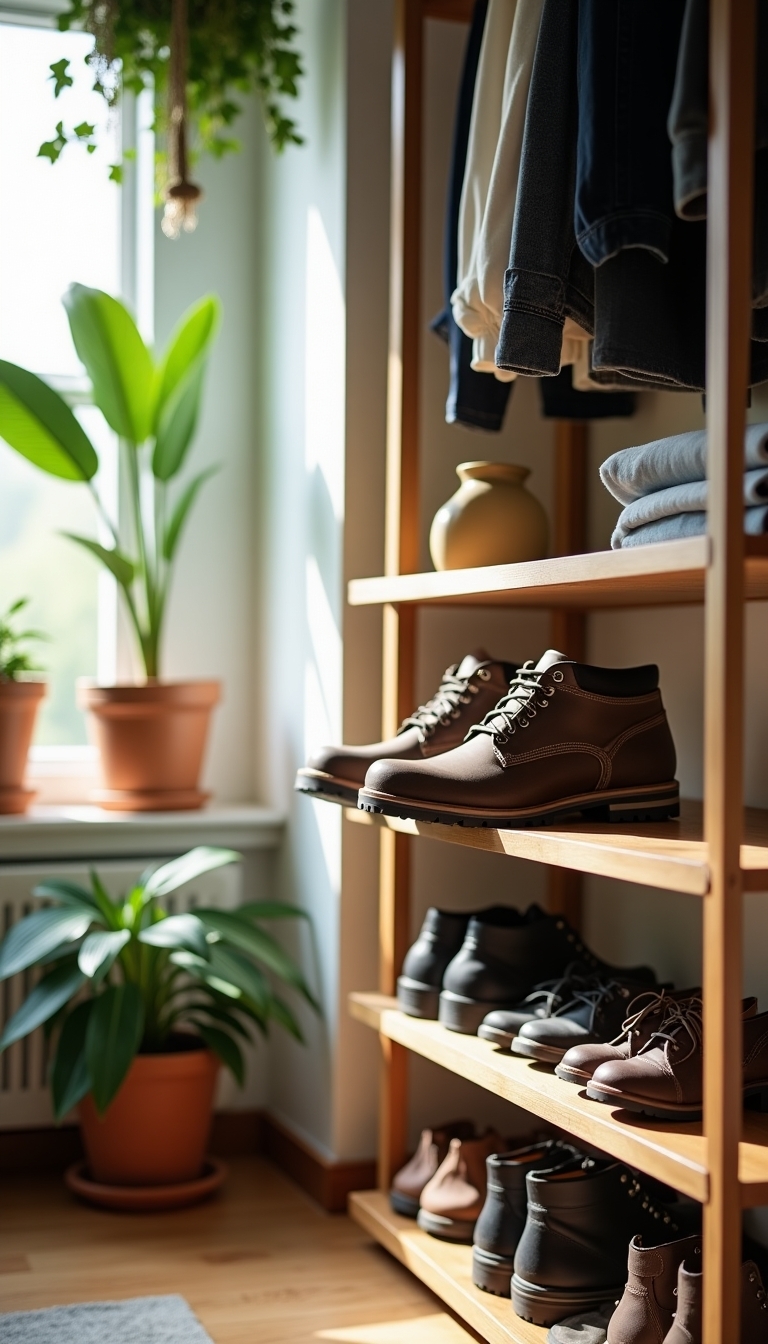
Choose a cool, dry space to prevent moisture buildup, which can lead to damage. Avoid extreme temperatures; heat can warp materials, while cold may stiffen leather. A well-ventilated area is essential for airflow, helping to deter mold.
Additionally, regular cleaning of insoles before storage will help maintain hygiene and prevent unpleasant odors. To further protect your boots, apply waterproofing finish after cleaning to ensure they remain resistant to moisture during storage.
Keep your boots in a dark space, as direct sunlight can fade and dry out the materials. For best shape retention, use boot racks or shelves, and consider boot shapers.
SEE THIS: How to Store Your Hiking Boots So They Last Longer!
Utilize Boot Care Products
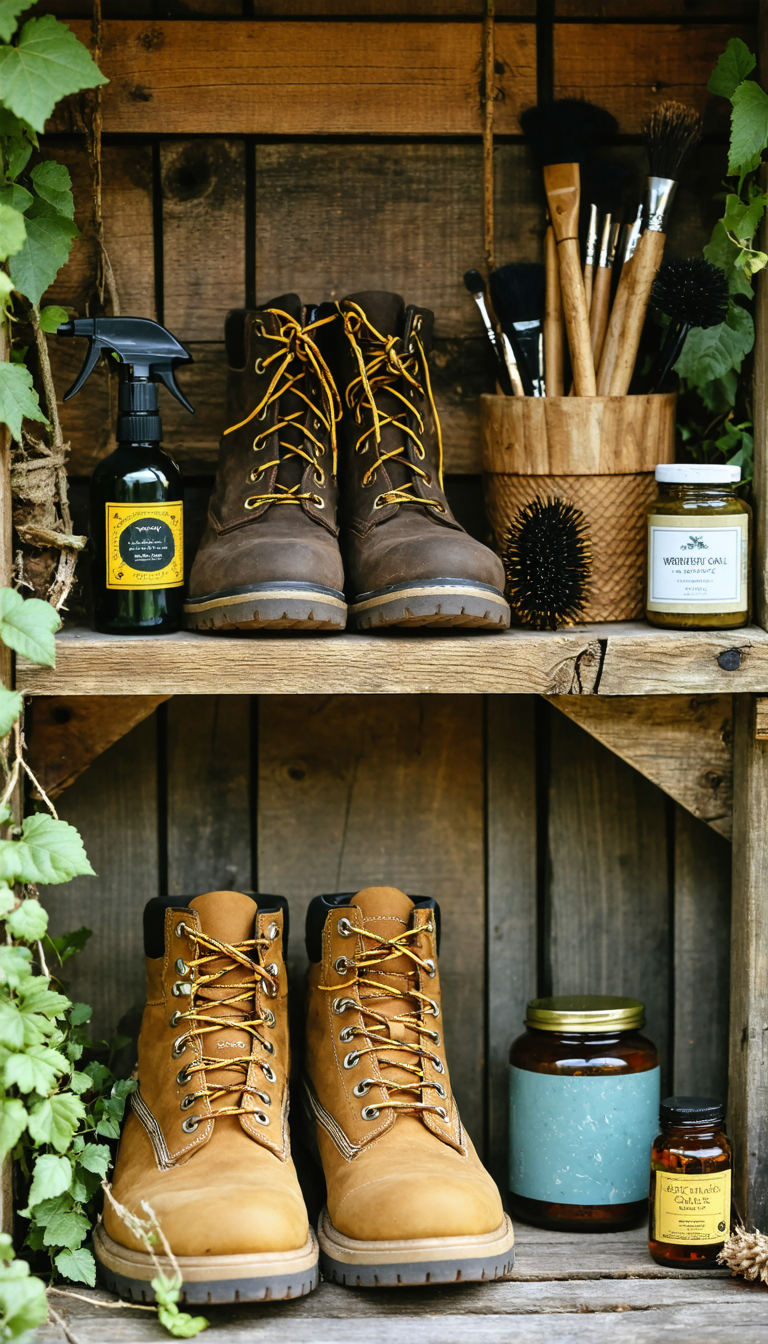
To keep your hiking boots in top shape, utilizing the right boot care products is crucial for preserving their longevity and performance.
Start with specialized boot cleaners or mild soap solutions to avoid harming the leather or waterproof membranes. Remember, harsh detergents can damage these materials, so stick to gentle options like saddle soap.
Regularly clean your boots after hikes, especially in damp conditions, using soft brushes or tools like the SonicScrubber for effective dirt removal.
SEE THIS: The Best Pink, Beige, and Pastel Hiking Boots Right Now!
Organize and Handle Boots Properly

Keeping your hiking boots in top condition goes beyond just cleaning and conditioning; how you store and handle them plays a significant role in their longevity.
First, choose a cool, dry spot for storage, away from direct sunlight. Regularly clean your boots to prevent dust buildup, and consider using breathable containers to combat moisture.
Storage bins can help keep your boots organized and protected from potential damage. Before storing, ensure you check all lace hooks and components to prevent issues that could arise during storage. When storing, avoid standing them on their soles, as this can distort their shape; instead, try placing them upside down or using boot trees for support.
Consider Material Impact on Longevity

When you invest in a good pair of hiking boots, understanding how the materials impact their longevity is crucial for maximizing that investment.
Leather boots often outlast synthetics, becoming more comfortable with time if you maintain them properly. You’ll need to condition leather regularly to prevent cracking, and waterproofing treatments like Sno-Seal can offer added protection.
Maintain Boot Shape During Storage
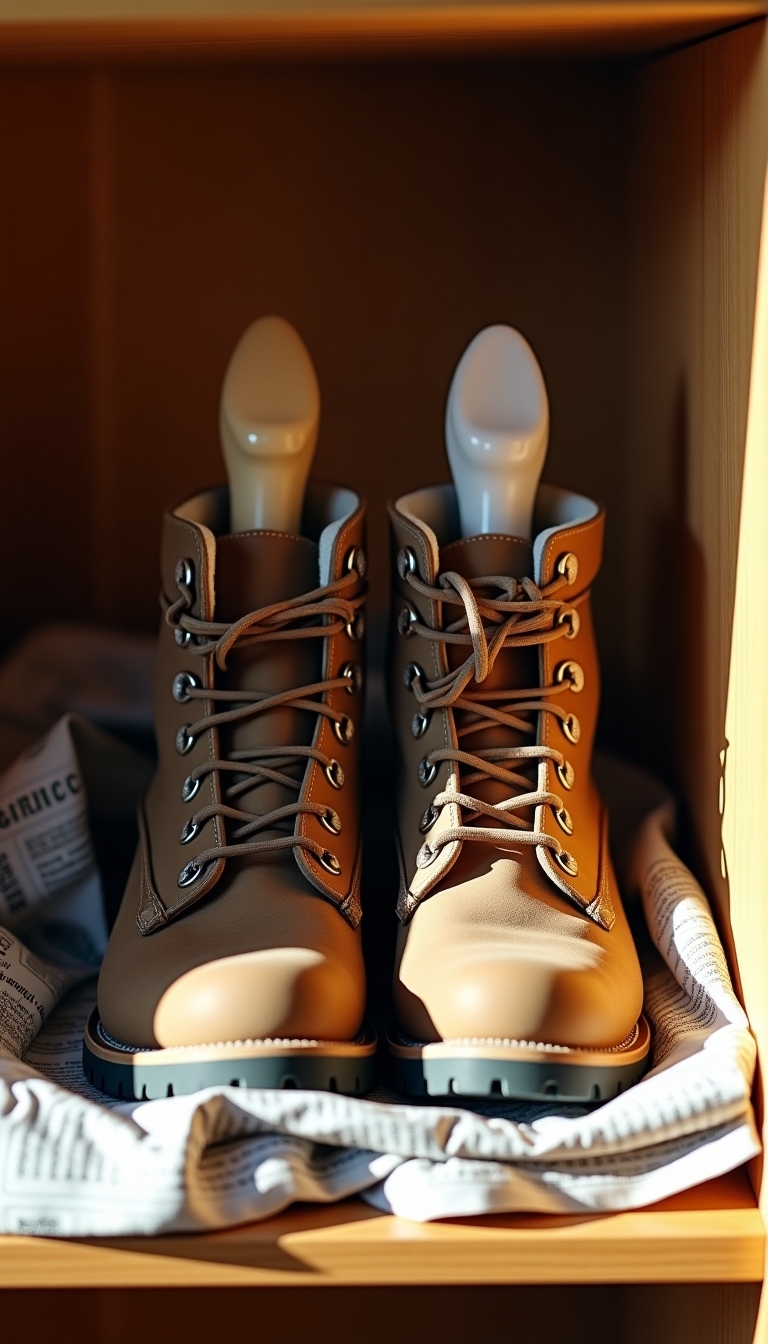
Properly maintaining the shape of your hiking boots during storage is essential for their longevity and performance. To keep them in prime condition, consider using boot trees, which can help maintain shape and absorb moisture.
If you’re looking for a budget-friendly option, stuffing your boots with newspaper or rolled-up magazines works well too. Always store tall boots upside down to prevent creasing and bending, which can damage the material over time.
Avoid folding or compressing them, as this can lead to permanent creases. Additionally, guarantee your boots have good ventilation around them; this not only keeps them fresh but also maintains their natural shape.
Monitor Storage Conditions
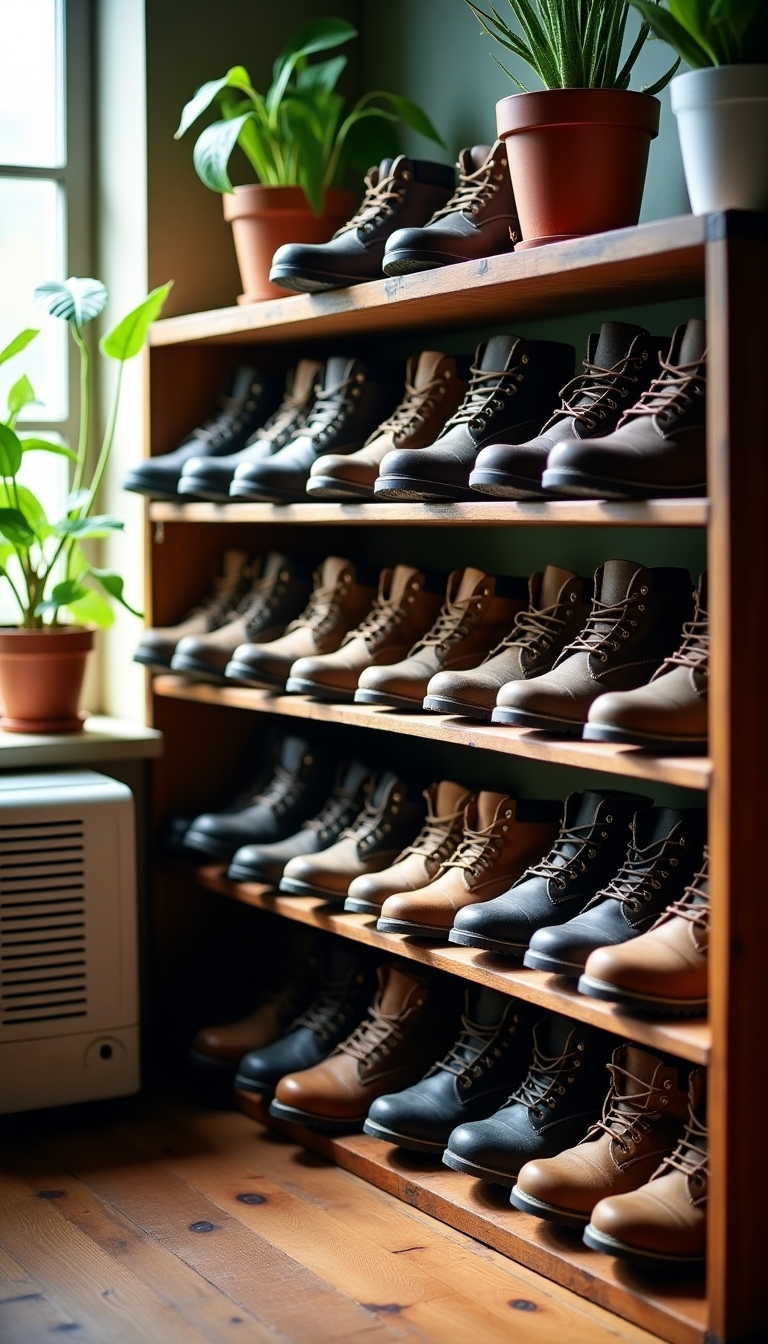
After guaranteeing your hiking boots maintain their shape during storage, it’s time to turn your attention to the surrounding conditions.
Aim to keep your boots in a temperature range of 18°C to 20°C. Storing them in basements or attics can expose them to harmful fluctuations, so find a stable environment.
High humidity can lead to mold, so verify they’re completely dry before storage and keep them in a dry area. Light exposure can fade materials, so store your boots away from direct sunlight. Protect them from pests by using sealed boxes or fabric bags and consider natural deterrents like cedar inserts.
Regularly Inspect Stored Boots
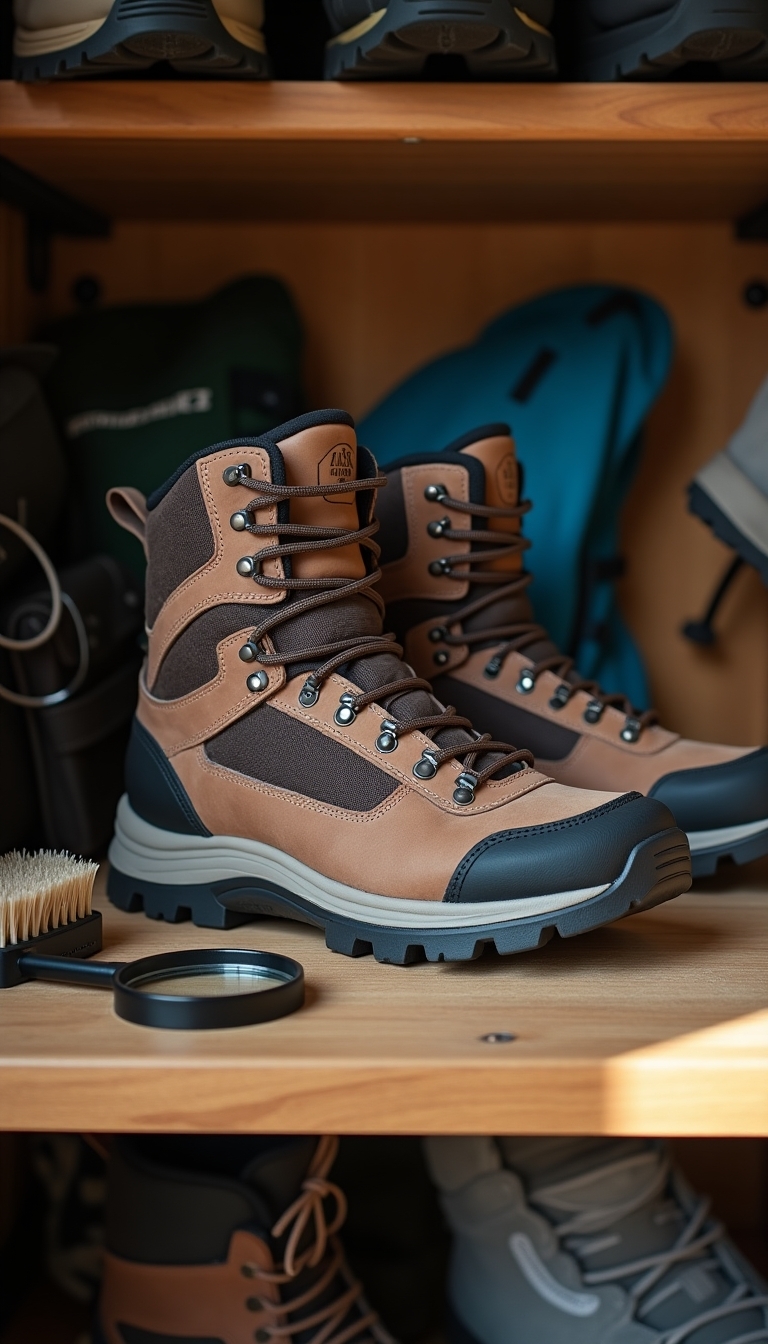
Regularly inspecting your stored hiking boots is essential to keeping them in peak condition.
Start by checking the rand for signs of separation, especially if they’ve been exposed to moisture. Look for loose stitches or tears that could compromise waterproofing.
Examine the soles for any deep gouges that might affect traction, and don’t forget to check for scratches on the leather that could benefit from conditioning. If water no longer beads on the surface, it’s time to reapply a waterproofing treatment.
My take…
By following these straightforward steps to store your hiking boots, you’re ensuring they stay sturdy and ready for your next adventure. Remember, a little care goes a long way, preserving the performance and prolonging the life of your beloved boots.
So, keep them clean, cozy, and conditioned in a climate-controlled corner, and you’ll be set for countless exhilarating excursions. With proper storage, your hiking boots will remain dependable companions on every thrilling trek.



